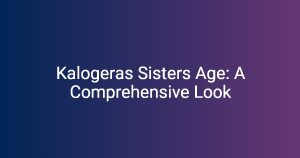Juice WRLD, born Jarad Higgins, emerged as one of the most influential figures in contemporary music, blending hip-hop with melodic elements and raw emotional expression. His artistic impact extended beyond just his lyrics, as his album covers played a crucial role in defining his brand and connecting with fans. In a world where visuals matter as much as audio, the significance of juice wrld album covers cannot be understated. This article intends to explore the artistry behind these covers, analyzing their design, themes, and the cultural impact they created.
Overview of Juice WRLD
Who is Juice WRLD?
Jarad Higgins, widely known as Juice WRLD, was born on December 2, 1998, in Chicago, Illinois. He gained prominence with his breakout single, “Lucid Dreams,” which showcased his unique ability to blend elements of emo and rap. Juice WRLD’s musical style often incorporated themes of mental health, love, and heartbreak, resonating deeply with a generation grappling with emotional struggles. His authentic portrayal of these themes helped him capture the hearts of millions and establish a significant following in just a few short years.
Significance of Album Art in Music
In the realm of music, album covers are not mere accessories; they are vital components of an artist’s identity. These visual representations serve multiple functions: they are marketing tools, artistic expressions, and reflective pieces of the artist’s journey. A strong album cover can leave a lasting impression, drawing listeners in and offering a glimpse into the themes and emotions of the music inside. For Juice WRLD, his juice wrld album covers played an essential role in encapsulating the essence of his work, often mirroring the narratives present in his songs.
Analysis of Juice WRLD’s Album Covers
“Goodbye & Good Riddance”
The cover for Juice WRLD’s debut studio album, “Goodbye & Good Riddance,” is striking, featuring a simple yet impactful design. The artwork prominently displays a sequence of vivid colors and abstract imagery that embodies a sense of chaos and emotional turmoil. This cover not only reflects the themes of heartbreak and struggle found throughout the album but also resonates deeply with fans who find solace in Juice’s vulnerability. Critics praised the cover for its emotional authenticity, which perfectly complemented the raw nature of the music within.
“Death Race for Love”
Moving on to “Death Race for Love,” the album cover diverges in its visual presentation. It features a futuristic aesthetic and a darker color palette, rich with symbolism that depicts chaos and conflict. The imagery correlates with the album’s exploration of existential themes and struggles Juice WRLD faced in his personal life. Fans reacted positively to the art, recognizing it as an apt reflection of Juice’s journey. The juxtaposition of vibrant colors against darker elements creates a dynamic that mirrors the complexity of his emotions.
“Death Race for Love (Deluxe)”
The release of the deluxe version of “Death Race for Love” introduced an updated album cover that maintains the core visual themes while adding new elements. This evolution in design symbolizes Juice WRLD’s growth as an artist and an individual. It represents his ongoing struggles and triumphs, as well as the additional tracks that expand the narrative of the original album. The deluxe cover art invites listeners to re-engage with the album, reinforcing the central themes of chaos and self-discovery through its visual enhancements.
“Legends Never Die”
After Juice WRLD’s untimely passing, “Legends Never Die” served as a poignant reminder of his legacy. The album cover features a serene yet powerful visual that encapsulates the themes of grief and remembrance. Artwork elements highlight his spirit and journey, emphasizing the emotional weight of loss. This cover resonated deeply with fans who were grappling with their feelings of loss, making it a significant piece of art that carries a lasting emotional impact.
“Fighting Demons”
The cover of “Fighting Demons” employs darker color choices that reflect Juice WRLD’s ongoing battle with mental health issues. The imagery evokes a sense of struggle and resilience, showcasing Juice’s candidness about his experiences. This specific cover sparked conversations within the music community about mental health awareness, resonating with fans who see their own challenges reflected in his art. In this way, the juice wrld album covers not only serve aesthetic purposes but also act as catalysts for meaningful dialogue.
Collaborations and Inspirations
Artists and Designers Involved
The visual branding of Juice WRLD’s album covers resulted from collaborations with talented graphic designers and artists. Professionals like Graphiq and other visual artists played a significant role in shaping the aesthetics of his work. Their expertise married well with Juice’s artistic vision, resulting in cohesive and impactful album art that enhanced the overall experience of his music.
Artistic Inspirations
Juice WRLD’s juice wrld album covers draw from various artistic sources, including animation, street art, and pop culture references. Artists like Takashi Murakami and Jean-Michel Basquiat are evident influences in his eclectic styles, accentuating the blend of high and low culture that defines his work. These artistic inspirations not only enrich the album covers but also contribute to a broader conversation about the intersections of art, music, and cultural identity.
The Cultural Impact of Juice WRLD’s Album Covers
Connection with Fans
Juice WRLD’s album covers have fostered a profound connection with fans, prompting them to create their own interpretations and adaptations. Fan art inspired by his covers has flourished online, illustrating how his visuals serve as a canvas for the fandom’s creativity. This participatory culture solidifies the bond between the artist and his listeners, proving that visual art can transcend mere representation to become an interactive experience.
Social Media and Digital Era
In today’s digital landscape, platforms like Instagram and TikTok have elevated the prominence of juice wrld album covers, allowing them to reach wider audiences. Creatives use these platforms to share edits and memes related to Juice WRLD’s art, shaping public perception and promoting his music. This virality underscores the power of social media in transforming album art into a cultural phenomenon, further immortalizing Juice WRLD’s work.
Conclusion
Juice WRLD’s album covers represent more than just artistic expressions; they encapsulate his journey, message, and legacy. Through vivid imagery and poignant themes, these covers resonate with fans and illustrate the complexity of emotion in his music. As we reflect on the power of juice wrld album covers, it becomes clear that they foster connections, inspire conversations, and will remain an integral part of his enduring legacy in music and visual culture.
Additional Resources
Where to Find Juice WRLD’s Album Covers
Fans looking for Juice WRLD’s album covers can explore various online music platforms, such as Spotify and Apple Music. Additionally, official merchandise stores often feature a collection of his art, allowing fans to own a piece of his legacy. Juice WRLD’s official social media pages also provide platforms to appreciate his artwork.
Related Reading and Listening
For those intrigued by album art, artists like Travis Scott and Brockhampton have notable covers worth exploring. Listening to Juice WRLD tracks alongside their covers offers a deeper understanding of the visual narratives that accompany his music.
Key Points Summary
| Album Title | Key Features | Themes | Artistic Elements |
|---|---|---|---|
| Goodbye & Good Riddance | Vivid colors, abstract design | Heartbreak, emotional turmoil | Authentic emotional expression |
| Death Race for Love | Futuristic aesthetic, dark palette | Chaos, conflict | Symbolism, emotional depth |
| Death Race for Love (Deluxe) | Updated design, visual evolution | Growth, self-discovery | Enhanced visual narrative |
| Legends Never Die | Serene imagery, emotional focus | Grief, remembrance | Legacy and impact |
| Fighting Demons | Darker colors, struggle representation | Mental health issues | Resilience, candidness |
Frequently Asked Questions (FAQ)
1. What is the significance of Juice WRLD’s album covers?
Juice WRLD’s album covers reflect his artistic identity and themes, enhancing the emotional experience of his music.
2. Which album cover is the most popular among fans?
“Legends Never Die” resonates deeply with fans due to its themes of loss and legacy.
3. Who designed Juice WRLD’s album covers?
Collaborations with graphic designers and visual artists were integral to creating his album art.
4. How did social media influence the perception of his album covers?
Platforms like Instagram and TikTok have promoted his artwork, leading to fan edits and increased visibility.
5. Are there any notable inspirations for his album cover designs?
Juice WRLD’s covers draw from various artistic influences, including street art and contemporary artists.
6. How do fans engage with Juice WRLD’s album covers?
Fans create art inspired by his covers, fostering a participatory culture around his music.
7. What themes are prevalent in Juice WRLD’s music?
Key themes include mental health, heartbreak, love, and personal struggles.
8. Can you find Juice WRLD’s album covers on merchandise?
Yes, official merchandise sites often feature his album art for fans to purchase.
9. How do album covers impact music sales?
Striking album art can enhance marketing efforts, drawing listeners in and potentially boosting sales.
10. Which other artists have notable album covers?
Artists like Travis Scott and Brockhampton showcase creative album art that complements their music.




